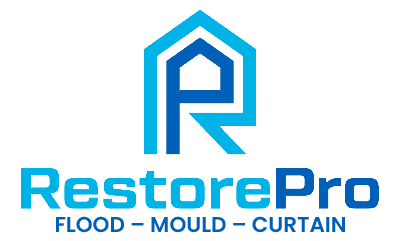When looking at what types of flood and water damage your insurance covers, it’s important to know the difference between sudden and gradual damage. Your standard home insurance usually covers unexpected events like a burst pipe or a sudden leak in the roof, paying for repairs to damaged floors and walls and replacing spoiled personal items.
However, if your basement floods due to rising river levels or heavy rainfall, you might not be covered unless you have specific flood insurance. Are you fully protected, or could unexpected water damage cost you a lot of money?
Key Aspects of Water Damage Insurance Coverage
Understanding your home insurance policy is crucial to know what types of water damage are covered. Most standard policies usually cover you for sudden and accidental water damage but may exclude other issues. Flood damage, for example, is often not covered by typical home insurance and requires separate flood insurance, especially in flood-prone areas. Gradual damage, such as slow leaks or seepage, is generally not covered because it is seen as a result of negligence or poor maintenance. Regular home maintenance and quick repairs are essential to reduce these risks.
Act quickly when dealing with water damage to prevent further issues like mould, which can complicate insurance claims. Insurance adjusters evaluate the damage and your response time, so prompt action can support your claim and help secure appropriate compensation.
Common Types of Water Damage Covered by Insurance
Home insurance usually protects against sudden and accidental water damage such as burst pipes or appliances that overflow. However, it is important to know that not all water damage is covered.
Here are some specific cases where your home insurance might help:
- Storm Damage: If a storm causes water damage to your home, for example through a leaking roof or a broken window, this is generally covered. The essential factor here is that the damage is sudden and caused by an external event.
- Sewer Backups: Although not always included as standard, many policies can be extended to cover sewer backup if this is a risk in your area. This coverage is crucial as it deals with sewage water overflowing into your home, which can be both damaging and dangerous.
- Ceiling and Floor Damage: Usual signs such as ceiling stains or warped floors due to a sudden leak are typically covered. These damages indicate accidental incidents, which are usually included in home insurance policies.
- Mould Issues: Mould that develops directly from a covered water damage incident often qualifies for coverage. However, this depends on how quickly you respond and the details of your policy.
Navigating the Insurance Claim Process
When you notice flood or water damage, immediately contact your insurance provider to start the claim process. Acting quickly ensures you get the coverage you need.
Document all the damage thoroughly. Before cleaning up or starting repairs, take detailed photos or videos to clearly show the extent and nature of the damage for your insurer.
An insurance adjuster will visit to assess the damage and determine how much of your loss the policy covers. Follow their guidance and provide any additional information or documentation they require to process your claim efficiently.
Keep detailed records of all communications with your insurance company, as well as receipts and invoices for the damage and repair work. This documentation will help ensure the claim process runs smoothly and that you receive the appropriate compensation for your losses.
Water Damage Exclusions and Limitations
Understanding the exclusions and limitations of your policy is crucial to ensure full coverage for water damage. Knowing what your insurance doesn’t cover helps avoid unexpected issues when making a claim.
Here are typical exclusions and limitations in home insurance policies regarding water damage:
- Gradual Damage and Seepage: Damage from gradually worsening water or seepage through cracks, such as slow leaks not promptly addressed, is usually not covered.
- Maintenance Issues: Damage resulting from poor maintenance or neglect is generally excluded. You are responsible for maintaining your home to prevent water damage.
- High-Value Limits: There may be limits on coverage for expensive items or structures affected by water. Check if you need additional coverage for high-value items.
- Flood Damage: Standard policies do not cover flood damage. Separate flood insurance is needed to protect against losses from floodwaters.
Some policies offer optional coverage to extend protection beyond these exclusions. Exploring these options can enhance your coverage and provide peace of mind.
Professional Flood & Water Restoration Services
When dealing with water damage, understanding professional restoration methods is crucial. Employing skilled professionals ensures effective management and prevents further issues.
Flood & Water Damage Restoration Techniques
Professional flood and water damage restoration services use advanced methods such as water extraction, dehumidification, and structural drying. These experts assess the damage and create a customised plan for complete recovery. Key processes include:
- Damage Assessment: Evaluating the extent of water damage, identifying salvageable items, and potential health hazards.
- Water Extraction: Using powerful pumps and vacuums to remove standing water, preventing further damage and mould formation.
- Dehumidification and Drying: Employing industrial-grade dehumidifiers and air movers to thoroughly dry the area, preventing mould and maintaining structural integrity.
- Preventing Further Damage: Implementing measures to prevent secondary damage, such as mould growth and structural issues.
Hiring Qualified Professionals
To repair water damage effectively, hire certified experts specialising in flood and water damage restoration. These professionals:
- Assess the Damage: Conduct thorough evaluations to plan restoration work.
- Employ Advanced Techniques: Use specialised equipment and skills to address water damage swiftly.
- Ensure Comprehensive Restoration: Manage all aspects of damage from initial assessment to final restoration.
Choosing experienced professionals guarantees high-standard repair work, reducing long-term issues and expediting the restoration process. This approach makes the situation easier to manage, allowing you to focus on recovery and everyday activities.
Worried About Flood & Water Damage? Find Out What Insurance Covers!
Ensure your home is protected from unexpected water damage. Understanding your insurance coverage and acting quickly is crucial.
For professional flood and water damage restoration, contact us today at 0800 843 776 or email us at info@restorepro.co.nz. Secure your home and prevent further damage now!

